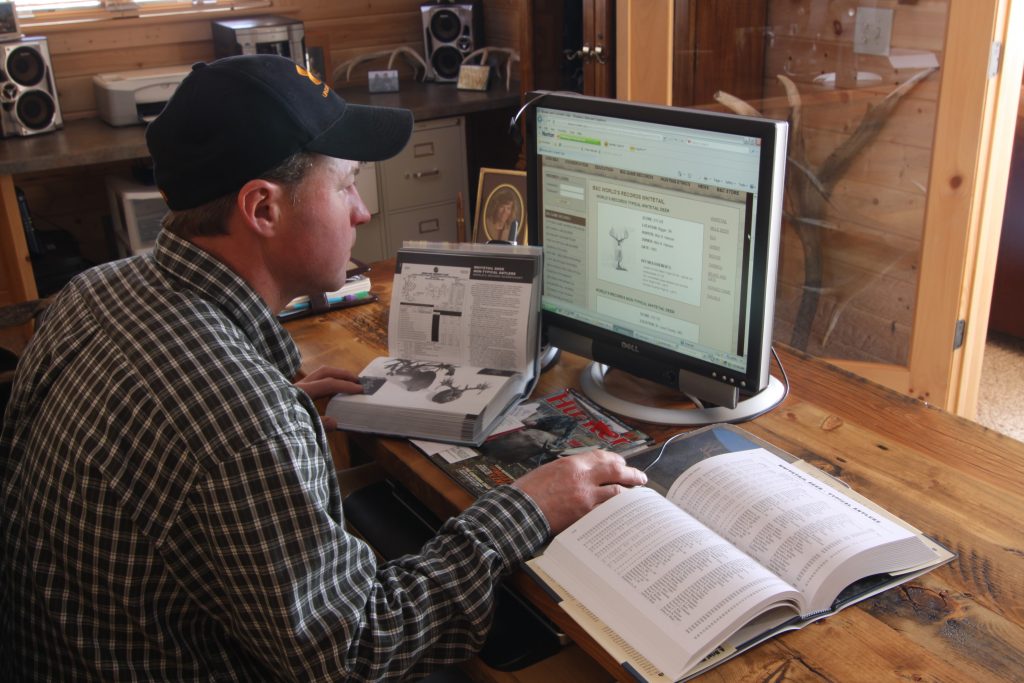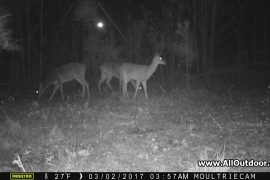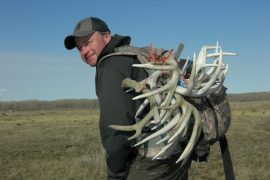
Utilize all the resources available online and with past data you’ve collected through camera surveys, mapping and in-field experience while researching for trophy whitetail hunting destinations. This includes your shed hunting trips where you’ve located antlers and logged that into your record books. (PHOTO: Copyright Mark Kayser)
Shed antler hunting can pay off in two ways. First, you can get a cash payout for selling your antlers. They are actually worth money in the dog chew and artisan market. Second, shed antlers can pay off by giving you a perspective on whether your management plan is working to grow big bucks.
Shed antler hunting junkies who repeatedly search properties almost always have a year-to-year record of a particular buck. By combining firsthand observations with your Nikons, trail camera history and the actual shed antlers, you glean a perspective of property potential.
Remembering body size seen through your binos and reviewing trail camera images helps you put an age on a buck. A sagging belly and Roman nose equals a mature buck. Measuring the actual antlers provides you with an idea of how much a deer may be growing from year to year. If you see a buck that isn’t growing to what you believe is full potential, then “Houston,…





